Services and Enterprise Canvas review – 5: Service-content
What is a service-oriented architecture – particularly at a whole-of-enterprise scope? How best could we summarise the content of each service – the elements that make up its structure? What do we need, to move beyond the IT-centrism that’s dominated so much of the previous discussions around service-architectures, and to give us service-descriptions that really can cover the whole of the enterprise and its needs?
This is the fifth in a six-part series on reviewing services and the Enterprise Canvas model-type:
- Core: what a service-oriented architecture is and does
- Supplier and customer: modelling inbound and outbound service-relationships
- Guidance-services: keeping the service on-track to need and purpose
- Layers: how we partition service-descriptions
- Service-content: looking inside the service ‘black-box’
- Exchanges: what passes between services, and why
In the earlier parts of the series, we saw how each service needs support from a variety of other services, to guide and validate its actions, to coordinate its actions with other services and its changes over time, and provide support from and for various forms of investment and the like. We’ve also seen how we can describe the services, and the architecture as a whole, in terms of a set of ‘layers’ of abstraction and/or realisation. What we need to move to next is more detail about the structures of the services themselves – what’s inside the ‘black-box’ represented by each service.
(Note: this post deals only with what happens inside the ‘black-box’ of a service. We also need to describe what passes between services, of course – but we’ll explore that in the next post in this series, ‘Part 6: Exchanges’.)
This, I’ll admit, was one of the aspects of Enterprise Canvas that most gave participants some difficulty during the ‘EA Masterclass‘ series in Australia earlier this year. That’s perhaps not surprising, though, because all that I gave them at first was this one diagram:
In practice we do need all of that detail – but we don’t necessarily need it all at once! So this time, then, I’ll take it rather more step-by-step…
Perhaps a first place to start is that, as described in the previous part of this series, about ‘layers’ and Enterprise Canvas, the service-descriptions are different at different layers of abstraction and realisation. Because of this, we’re also going to need the ‘layers’ diagram from that post:
You’ll also need to refer to the post ‘Fractals, naming and enterprise-architecture‘, because that provides definitions and explanations of the key terms as used here.
The core point here, again, is that the content that we need to identify, collate and describe will be different at different layers – particularly between rows 0-3.
(Between rows 3-5, the content-types themselves remain much the same – it’s mainly just the types and levels of detail that change between those layers. Row-6 ‘Action-Records’ is different, but mainly because it’s much simpler – but in essence most of it is a subset or description of what’s happened in row-5 and in the transition through the ‘travelling-NOW’, and we probably don’t need to deal with that here in this review.)
At the topmost layer, row-0 ‘Enterprise’, there is no service-content as such. That’s because this layer represents the ‘ultimate ‘Why’‘, the final ‘Because.’, to which everything else is anchored – or, to put it another way, it’s what all of the services in the shared-enterprise ultimately aim to serve.
The content that we do find at this layer is anything which defines the enterprise as a shared-enterprise:
- vision, purpose or promise (and similar ultimate-anchor terms)
- derived values that act as the driver and anchor for the Value-Proposition and the validation-services
- principles, guidelines, root-level laws or regulations, and other actionable guidance for the direction-services
To use the ZapaMex example from the ‘Layers’ post in this series:
Remember that this is not about the organisation alone: the shared-enterprise has a much larger scope than that, and this layer of content is about identifying what drives the overall shared-enterprise – not solely the organisation or its own specific services. In the terms used in Enterprise Canvas, the organisation itself is merely one potential player amongst many within the overall shared-enterprise – see the post ‘Organisation and enterprise‘ for more detail on this.
(If we ever get this one wrong, and allow our modelling to become ‘business-centric’ rather than whole-enterprise holistic, we’ll soon find ourselves in deep, deep trouble – architecturally-speaking, at least – without being able to understand why. You Have Been Warned, etc?)
As we move downward to row-1 ‘Scope’, we start to need real content about services. For here, though, all we need are lists of ‘what’s needed to make the enterprise happen’ – and for this, the basic Zachman interrogatives will usually suffice:
Using the respective ZapaMex example again:
Note that these are just lists: we don’t describe any connections between things at this stage, in this layer. Our organisation and its services or service-elements should appear in some way or other in most or all of these lists, of course.
As we move down to row-2 ‘Business-Model’, we do need to start modelling the relationships between the various entities. At first this can consist of simple modelling of relative roles – self, competitor, supplier, regulator, customer and so on. And yes, given that we have already established that the shared-enterprise is larger in scope than the organisation, for this purpose we can safely place the organisation at the centre of our modelling – as in this example for ZapaMex:
For these first stages, we’ll use those lists that we derived in row-1, based on the Zachman-interrogatives. But we’ll soon find, as we start to go into any depth at all, that those interrogatives alone won’t be enough – even for an overly-simplistic transaction-oriented summary of ZapaMex’s business-model:
At which point, the simple interrogatives…
…need to morph into terms that are more descriptive, and capable of much more depth:
The full details for these terms are in that post ‘Fractals, naming and enterprise-architecture‘, but as a quick summary:
- Asset (‘What’) - a resource for which the enterprise acknowledges responsibility
- Function (external of ‘How’) - external-facing interface, responsible for service-contracts, protocols, SLAs, etc; accepts and returns assets
- Location (‘Where’) - a position within the terms of a specific schema
- Capability (‘Who’ / ‘How’ / ‘with-What’) – the ability to do something; includes the agent that enacts the capability, the action-type or asset-type acted upon, and the skill-level or competence of the agent
- Event (‘When’) - trigger for a function and underlying capability
- Decision / Reason (‘Why’) – sensemaking / decision-making for the service, and/or its type of guidance or governance
There are several points there that probably need a bit of extra explanation:
— There’s no ‘Who’. That’s not a mistake, it’s a deliberate omission – and its intentional absence is meant to force us to think much more carefully about what ‘Who’ really means in real-world practice.
One aspect is that the ‘Who-as-actor’ part is sort-of subsumed into Capabilities – in particular, in the Agent, and the Skill-level of that agent. Yet note, though, that trying to equate that with ‘Who’ can be misleading, because although the agent is indeed sometimes a real-person, it’s just as probable that the agent could be a machine, an IT-application, or even – for some types of services – something completely intangible, such as a brand. Shifting to the neutral term ‘agent’ allows us to to describe activities without always being forced to specify how they’re implemented – an implementation-neutral stance that we certainly need in row-2 work, and most of row-3 work as well. It also allows us to explore substitutability, where one type of agent can take over the same task from another: often a fundamental need in business-process redesign, for example, where an IT-application might replace a human agent; or in disaster-recovery, where the opposite might need to occur.
The other supposedly-natural place for ‘Who’ would be as an Asset, in line with that usually-well-meant phrase “Our people are our greatest assets!” For me, though – and this, to me, is an absolute and non-negotiable fundamental for all enterprise-architecture – we must insist that people are not ‘assets’: it is the relationship with the person that is the asset. Hence the asset-dimension of ‘relational-assets’, as we’ll see later. We link to real-people via relational-assets, but people themselves are never part of the architecture.
(Okay, there’s the extreme special-case of the anchorite – but I doubt that many people these days would have sufficient religious-fervour for their organisation’s enterprise that they’d willingly present themselves to be permanently bricked-up inside the corporation’s walls… 🙂 )
— ‘Capability’ isn’t a Zachman-primitive. No, it’s not – and again, that’s intentional. Capabilities are made up of other Services (and also assets as Products or Exchanges, as we’ll see in Part 6 of this series), which in turn are composed of other services, that are themselves made up of other services, and so on, and so on, potentially ad-infinitum. The fact that Capability isn’t a primitive is what enables the recomposition and fractal-recursion that are so essential to a service-oriented architecture.
The other elements form sort-of-homogenous composition/aggregation-hierarchies: there are differences created by different combinations of the asset-dimensions, for example, but each of those core-types is still fundamentally discrete – an asset is not an event is not a function-interface is not a location, and is not in itself a decision or reason either. By contrast, a capability will always be heterogeneous, a compound-entity, a mixture of different-things-coming-together-to-make-things-happen – and yet that’s precisely where its power resides. Without capability as a compound-entity, there would be no way to bring everything together as a service, and nothing would happen – which is why we need it here as an ‘equal citizen’ alongside the nominal Zachman-style ‘primitives’.
(Another way to put this: if event – for example – is a ‘something’s-happened’ entity, and ‘asset is a ‘do-something-with-or-to’ entity, then capability is a ‘bringing-things-together’ entity. Makes sense, I hope?)
— ‘Function’, ‘Capability’ and ‘Service’ could all seem to be the same thing. Yes, without sufficient care, they might indeed seem to be the same – and that’s the problem. In many business-contexts, they are regarded as sort-of essentially the same thing, kind-of, but at different levels, maybe, sort-of… – and it’s precisely that type of blurry confusion that the more precise terminology for Enterprise Canvas is designed to prevent.
Re-read those definitions above. Function is just an interface: on its own, it can’t do anything at all. Capability is the ability to do something, but until it’s linked with a Function (and everything else) it literally has no function. It’s only when they’re all linked together in and as a Service that things really start to happen – that needs can genuinely be served. As a quick visual summary:
There’s more on this in other posts here, such as ‘On function, capability and service‘, ‘Service, function and capability (again)‘ and ‘Function, capability and affordance‘.
— There’s no ‘Process’. Yes – and that again is another deliberate omission. In part it’s because, yet again, business-folks seem to have a really bad habit of using the word ‘process’ for what is actually a type or level of Service – in other words, creating yet more blurriness and ambiguity, which really doesn’t help when we’re trying to sort the resultant mess of miscommunications…
The reality is that, within a service-oriented architecture, process is just a way in which services are linked together into a usable sequence of some kind, to deliver some kind of broader collective ‘service’. Because it’s just a sequence, the boundary of a process is always arbitrary: the boundary is where we say it is – nothing more than that. And as soon as we put a boundary around it, it becomes a type of Service, because it has a boundary that now needs function-interfaces and trigger-events and business-rules on that boundary. Hence we really don’t need a separate term for ‘process’: other than that point about sequence, it’s already implicit anyway in the concept and definition of a Service, and flows of Exchanges between those services.
— There doesn’t seem to be an explicit ‘How’. You’d perhaps have to dig a bit deeper to notice this one… 🙂 – but if Function is only an interface with protocols and service-level agreements and suchlike, and Capability can consist of other Services but of itself is only an agent and an action-on something at a given skill-level, then where exactly is the ‘How’? The answer is yes, it’s true, that when we look deeper here there’s no explicit ‘How’ in the usual sense expected in, say, a process-model – and again, that absence is intentional, for much the same reasons as that there’s no explicit ‘Who’.
The aim here is to force us, as architects, to look much more carefully at how things actually work in the real-world: and the reality here is that ‘How’ is an emergent outcome – one that arises from the interaction between Function, Capability and Decision/Reason, and to some extent the other elements too. Look at an ISO9000-type work-instruction: it’s a list of action-on a given Asset, by a given agent, at a given skill-level, in accordance with a specific request from some interface, and all done in accordance with a set of applicable business-rules and assigned-responsibilities (‘procedures’) and policies and guidelines and validations and so on. There is no distinct ‘How’ as such: ‘How’ is just an emergent outcome from the ways that all of those elements interact.
The assumption that there should always be an explicit, identifiable, hardwired ‘How’ probably arises from too much exposure to attempts at service-implementation by automation alone – such as in poorly-thought-through business-process-reengineering and the like. In automation, yes, we generally do need to hardwire the ‘How’, because that’s all that machines can cope with: but as soon as we need to change the agent – as ISO9000 explicitly warns us – then the ‘How’ inherently changes too. And in most architectures we’ll need to allow for substitutability of agents and suchlike – at least, if we’re to have an architecture that can cope with such key concerns as problem-escalation and disaster-recovery.
Hunting for a predefined ‘How’ is much the same mistake as hankering too much for a predefined ‘process’: it’s trying to apply the ‘in-the-box’ arbitrary boundaries of linear-thinking to a context where, in reality, everything is inherently fractal and recursive, where such ‘boxes’ don’t actually make much sense, and where linear-thinking really doesn’t work well at all. Instead of looking for a ‘How’, we need to explore more carefully the business-need (as specified in the Function), the ability of something to satisfy that need (as in the services-within-services of the Capability), the guidance that that ‘something’ would require (from the Decision elements), and the ways in which these and the other elements all interact in order to satisfy that business-need.
Yes, it’s a different discipline, a different kind of rigour, than what many people might expect. But unless the architecture is solely about implementing fairly low-level IT- or machine-based automation – and nothing else at all than that – we’re going to need that additional rigour and discipline if our architectures are to work well.
By the time we get down to row-3 ‘System-Model’, and onward into ever-finer implementation-detail in row-4 ‘Design-Model’ and row-5 ‘Deployment-Model’, those coarse-grained categories alone will not be enough: we need to be more specific about what each of those elements is made up of, so as to know how they go together. This is where we discover that not only are the Zachman-primitives a bit misleading for architecture – such as around ‘Who’ and ‘How’, as we’ve seen – but there’s actually an entire dimension missing from that framework. Which is what brings us to this expanded visual-checklist, with which we started here:
The key concern that’s driving this, and also driving that movement ‘up’ and ‘down’ between the abstract and the concrete, is this:
Services are usable to the extent that they are architecturally-complete;
services are reusable to the extent that they are architecturally-incomplete
By ‘architecturally-complete’, I mean that all of the elements for the service are in place: we know exactly what assets are or will be in play, what interfaces and protocols will be used, at what locations, using which capabilities with which agents acting on what types of assets with what skill-levels, triggered by what events, in accordance with what principles and business-rules. As the service passes through ‘the travelling-NOW’, the exact moment of service-delivery, all those things are and must be, for that moment, absolutely defined – otherwise service-delivery doesn’t happen.
On the far side of ‘the travelling-NOW’ – as we move to the world of row-6 ‘Action-Records’ – different subsidiary-services come into play, looking back at that moment that’s now in the past, and passing those records on to the guidance-services, the investor-beneficiaries, and the wider shared-enterprise, for review and to guide future service-delivery. Once we’ve moved to the past, nothing from that ‘the NOW’ can be changed – in a very literal sense, that moment has passed. But from the past, we loop back to the future – a point we can perhaps illustrate with one of the earlier SCAN crossmaps:
In practice, the role of architecture is to explore possibilities for the future, playing with the level of uncertainty – the ‘incompleteness’ – about elements of the architecture, in order to identify the most appropriate trade-offs and configurations both within each service and across the whole. That’s why we need those varying levels of abstraction about detail, ranging from almost-nothing to the Zachman-interrogatives to the ‘Asset / Function / Location / …’ set, to even deeper explorations using the asset-dimensions and decision/skills-dimensions, here in rows 3, 4 and 5. It’s this extra ‘dimension of dimensions’ that, yes, I’ll admit, makes that service-content checklist-graphic seem a bit overwhelming at first: but it actually is necessary, and once we get the head around it, actually is quite easy to use.
As indicated in the checklist-graphic, the asset-dimensions apply to:
- asset
- function
- location
- capability::agent
- capability::action-on (that which is acted on by the capability)
- event
The key point here is that an asset – and, by reference, anything else that uses or relates to assets, as in the rest of that list just above – is composed of (how best to phrase this?) four distinct clusterings, of sets of attributes or something like that, that are fundamentally-different and often mutually-exclusive. Other variations on much the same kinds of clusterings exist in other domains, such as the classic ‘four states of matter’ – solid, liquid, gas, plasma – or the even-more-classic Western-culture ‘four elements’ – physical, mental, emotional, spiritual. It’s from the latter, and their implied mutual-exclusivity, that I’ve adapted the label-set we use in Enterprise Canvas:
- physical: physical object, machine, geographic-location etc
- virtual: data, software-application, IP-address etc
- relational: link between people and/or other tangible ‘things’
- aspirational: person-to-virtual or virtual-to-virtual link (brand etc)
Which we could separate-out from the checklist-graphic as a single column, as follows:
Or, in visual form as four mutually-exclusive dimensions:
(This layout is what I’ve called a ‘tetradian’ because the mutual-exclusivity of the dimensions allows us to pack all four of them into a three-dimensional space, as the internal-axes of a tetrahedron.)
Some of the distinguishing-attributes that make up those asset-dimensions include:
- intrinsic (physical, virtual) vs ‘between’ (relational, aspirational)
- tangible (physical, relational [both end-points], aspirational [one end-point, usually]) vs non-tangible (virtual, aspirational [other or both end-points])
- transferrable (physical, virtual [via copy]) vs non-transferrable (relational, aspirational)
- alienable [if I give it to you, I no longer have it] (physical) vs non-alienable [if I give it to you, I still have (a copy of) it] (virtual) (not-applicable to: relational, aspirational)
The reason why these dimensions and the distinguishing-attributes are so important is that they determine what we can and must (or must not) do with the respective asset. A purely-physical asset has to be handled and stored and managed in a physical way: it’s unique, it’s transferrable, it has mass, it occupies physical space. A purely-virtual asset has to be handled in a virtual way: it’s sort-of transferrable, by copying, and it has no mass and occupies no space – but we can’t get at it, or even store it, without giving it some form of non-virtual existence. (There’s more on this in the posts ‘Assets and services‘ and ‘Fractals, naming and enterprise-architecture‘.)
Every type of asset also has its own variant of CRUD – Create, Read, Update, Delete. Which also illustrates, yet again, why the relationship is the asset, and not the person-as-asset – because whilst it should be possible to create, read, update and delete a relationship between people, we should not be able to do the same with people themselves! (Not in any normal business-process, anyway…)
In practice, most of the asset-dimension entities that we deal with in enterprise-architecture and elsewhere – assets, functions, locations, capabilities, events – actually represent some kind of combination of those dimensions. For example, consider a printed library-book:
- it’s a physical ‘thing’ – so we have to manage it as a physical-asset, with storage, location-tracking, physical-maintenance and so on
- it contains virtual information – so we have to manage it as a virtual-asset, with possible concerns about copying and suchlike
- there are ownership-relationships with various people, sometimes temporary (as a library-loan), nominally also ‘permanent (owned by the library) – so we need to track those relationships
- there are value-relationships or meaning-relationships with or for various people – so we might need to track what people feel about the book in general, or even this specific copy
Or, to give another example, the location of someone’s office:
- it has a physical location – so we’d need to note the physical schemas that apply, such as geographic location, building-floor, corridor-position and so on
- it may have a virtual-location – so we’d need to note any virtual schemas that might apply, such as room-ID, role-ID and suchlike
- it will imply various relational-locations – we’d need to note who uses this office at this time, or in the past, or is listed to do so in the future; and/or where each of those people sit within the organisational-architecture, or reporting-relationships, or other relational schemas
- it may imply meaning-locations – for example, this was where a famous scientist worked, this is where the first transistor was created, this is where the treaty was signed
And yes, all of this could easily go on to infinity… So remember always that core principle of Just Enough Detail: start with the business-need in mind, and do just enough assessment to satisfy that need – no more, but also no less.
On now to the decisions/skills dimensions, which, as the checklist-graphic indicates, applies to:
- capability::skill-level
- decision/reason
Which we can summarise as:
- Rule-based (roughly equivalent to trainee skill-level): simple, linear, true/false or limited-quantitative
- Algorithmic (or apprentice): complicated, still linear but can include delays and/or feedback-loops
- Guidelines/patterns (or journeyman): complex, ambiguous, non-linear, ‘wild-problems‘
- Principle-based (or master): uniqueness, extreme-uncertainty, extreme non-linearity, ‘chaotic’
Which, as with the asset-dimensions, we could separate out from the checklist-graphic as a single column, as follows:
Which we can then link to a SCAN crossmap on skill-levels, as follows:
All of which we can also loosely align with the asset-dimensions as follows (though we do need to take care to avoid inappropriate conflation here):
- rule-based/trainee to physical-world; capabilities of physical machines as agent; can work well (though only with minimal uncertainty) at real-time speeds
- algorithmic/apprentice to virtual-world; capabilities of software-application or software-guided machine as agent; may struggle to keep up with real-time speeds
- guidelines/journeyman to relational (human) world; capabilities of human as agent, possibly with IT as decision-support and/or pattern-matching; may well struggle to keep up with real-time speeds
- principle-based/master to intentional/aspirational (high-skilled/purposive human) world; capabilities of human as agent; can work well with high-uncertainty at real-time speeds
Which in turn brings us to some serious warnings about some serious architectural booby-traps, such as summarised in the post ‘Learning and the limits of automation‘. Of these, probably the most important are:
— Don’t try to do everything with automation. This is such a common mistake – especially by the IT-obsessed – that this point may need to be hammered home at every possible opportunity. Yes, we can almost certainly do part of anything with some form of automation – sometimes quite a large part of that ‘anything’. The catch is that, on its own, automation can only handle the parts of that ‘anything’ that work well with linear cause-and-effect logic – the ‘trainee’ and ‘apprentice’ levels of skill, the ‘tame-problem‘ parts that are to the left-hand side of that SCAN skills-diagram above. Yet Reality Department always – always – includes uncertainties and ambiguities that will break a linear logic: and if linear-logic is all we have, then the whole architecture will fall apart at that point, too. A whole-of-enterprise architecture cannot be built successfully from automation alone: we will always need to fully include human elements within that overall picture. Which means that we need to include those elements from the start – not just as an afterthought, as happens too often in architectures at present.
— Provision for skills-learning is an essential part of the architecture. This is another really common mistake – not just treating the skills needed to support the capabilities of the architecture as an afterthought, but treating the means of learning those skills as an afterthought as well. Compare that SCAN skills-diagram above with this SCAN crossmap of the effective limits of linear ‘tame-problem’ tactics:
And perhaps also this SCAN crossmap with ISO9000 levels, and the effective applicability and boundaries of each level:
The crucial point to note here is that, at the moment of action – the ‘NOW!’ – all we have immediately available to us are simple work-instructions, or the actionable principles that devolve from the shared-enterprise’s vision. In other words, the trainee, and the master. And the trainee – or the automation – can only handle the work-instruction-friendly tame-problem parts of the context: as soon as they hit anything more uncertain than that, they’ll get thrown over ‘the edge of panic’ into the Not-known domain, where they’ll need a master’s skills to sort out the mess.
But where do those master-level skills come from? The answer is: the long way round, from trainee up to apprentice to journeyman and back down again to master, through many, many hours of analysis and experiment, much of it necessarily away from the real-time ‘NOW!’. And while those people are doing that apprentice-level and journeyman-level skills-development, they cannot be on ‘the front line’ – often because at those stages they still only know enough to get into real trouble, but not enough to get out of it again. The reality is that most people learn by making mistakes, and then learning from those mistakes: and that means that we’ll often need to place them in a safely-circumscribed ‘safe-fail’ version of the real-world context – because real-world practice usually needs to be as ‘fail-safe’ as we can make it.
So if our architecture – and our organisation – demands and expects that people will and must always be ‘at maximum efficiency’, ‘fully productive, 100% of the time’, we would in effect block off the path via which people can develop their skills beyond trainee-level. What we’d have then is an architecture that looks amazingly productive and efficient in the short-term, but is guaranteed to fail in the medium- to longer-term, as those people with the master-level skills retire or move on, and there’s no-one with the right kind of context-specific skills available to replace them. In short, a full architecture must include explicit provision for development of the skills needed to maintain the capabilities of that architecture – and that includes the provision of the necessary ‘time off’ and ‘safe-space’ within which to develop those skills.
Anyway, time to bring all of the above together, and wrap-up this part of the series.
Let’s look, for example, at the row-3 ZapaMex business-model, from the previous part of this series:
The organisation as a whole represents a service which – as we can see above – is itself made up of other services.
Each of those nine cells within the business-model represents a service, each of which we’d probably describe in terms of a set of subsidiary-services.
From ZapaMex’s perspective, everyone (or everything) in a ‘supplier’ or ‘customer’ role relative to ZapaMex and its services also represents a cluster of services with which it interacts.
Each of the flows on the business-model diagram above – explicit, as shown as an arrow, or implicit, at the borders between each of the services – itself implies a service at each end of that respective flow, to manage the interactions and exchanges required for that flow to happen.
So, for each of those services indicated or implied above:
- What Assets does that service need, in order to do its task?
- What Function-interfaces does that service need, using what protocols, with what service-level agreements, and passing which Assets (as Exchanges between the respective services)?
- At what Locations does the activity for that service take place?
- What Capabilities are needed to make the required actions happen for that service, with which agents, acting on what types of Asset, with what skill-levels?
- What Events occur, or need to occur, for that service, in order to signal the requisite transitions of state or action?
- What Decisions/Reasons – business-rules and more – should apply for that service?
Assess each of those in terms of the respective combinations of asset-dimensions and/or decision/skills dimensions.
If it sounds like a lot of work to do, well, yes, it is – but it’s no more work than you’d do anyway, to do the architecture properly.
If it sounds ‘complicated’ (as someone complained about the ‘layers’ post in this series), well, yes, it probably is, at first – but no more so than for anything else that’s somewhat new to you when you first work with it. In practice, it’s actually a lot less complicated than trying to sort out the mess created from trying to link together the largely-incompatible muddle of single-function, single-domain frameworks that currently litter so much of the enterprise-architecture space.
And remember, again, that so-essential guideline of Just Enough Detail. Don’t try to ‘boil the ocean’: do only that amount of service-modelling that you must do to satisfy the business-need – no more, but also no less.
(I did promise, in response to a comment from Anders Danielsson in the ‘Investors‘ post in this series, that I’d put in a real-world example here, about people and the role of relational-assets in a hairdresser’s business. But this post really is too long already, and it’s probably best left anyway until after the exploration of Exchanges in the next part of this series. I will use it as a worked-example in the ‘summary and wrap-up’ post, after the series ends – that’s acceptable for now, I trust?)
Anyway, just one part left in this series – about Exchanges, the content of flows between services. Let’s move on to that now, before wrapping up the series as a whole.
And, as usual, any concerns or questions so far? Over to you on that, if you would?
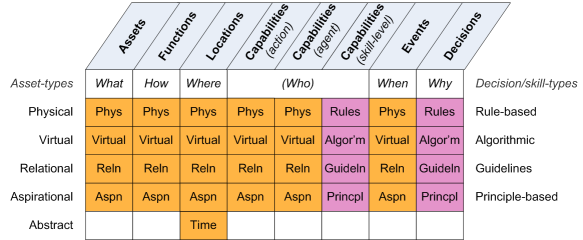

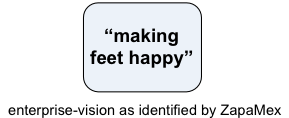
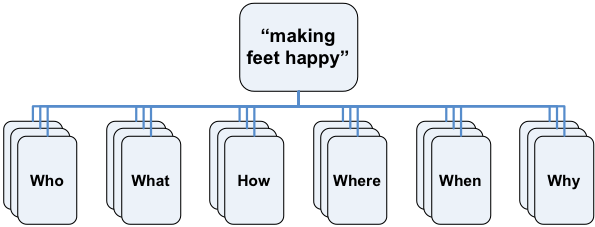
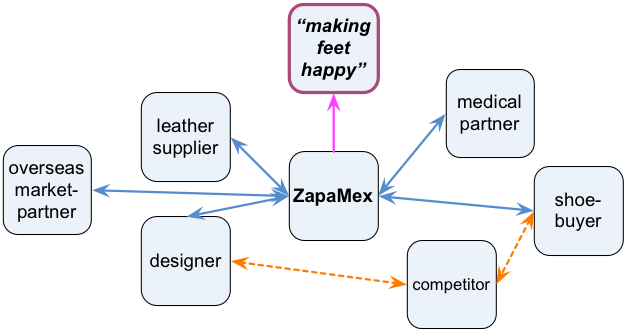



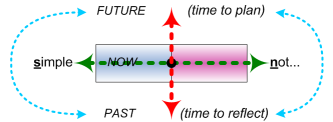
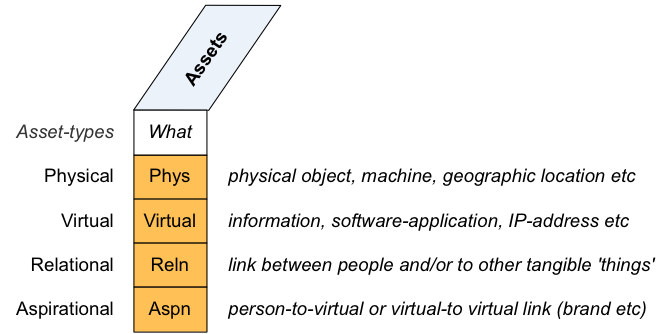
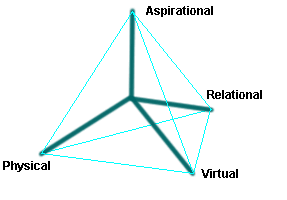
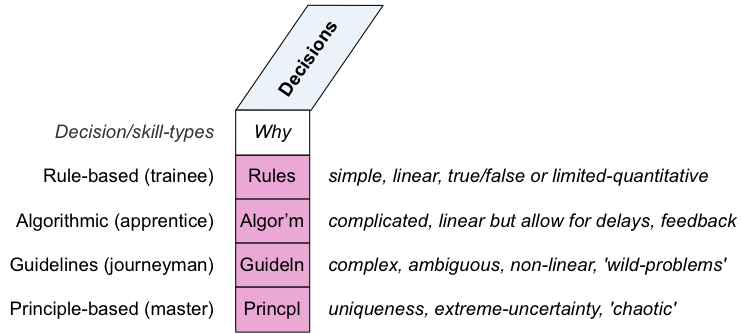

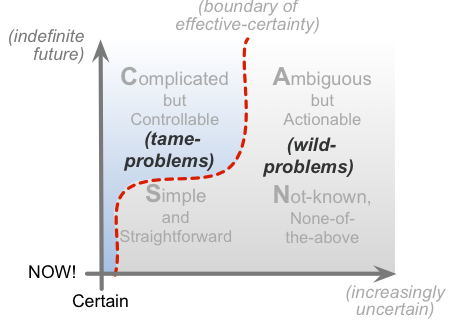
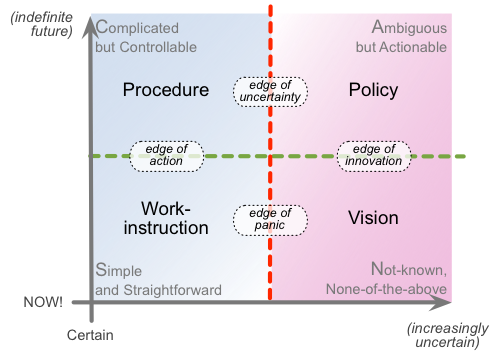
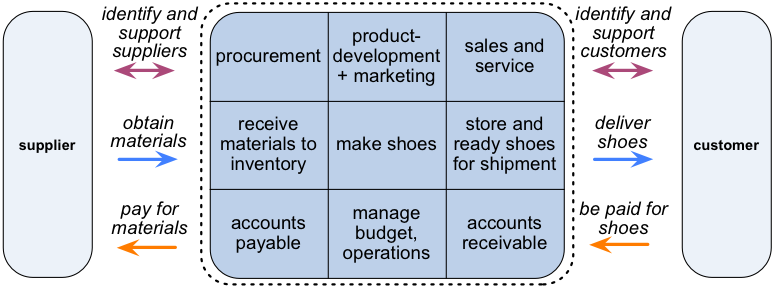
Leave a Reply